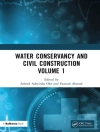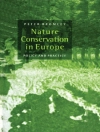This volume addresses in detail both livestock’s role in climate change and the impacts of climate change on livestock production and reproduction. Apart from these cardinal principles of climate change and livestock production, this volume also examines the various strategies used to mitigate livestock-related GHG emissions, and those which can reduce the impacts of climate change on livestock production and reproduction. Presenting information and case studies collected and analyzed by professionals working in diversified ecological zones, the book explores the influence of climate change on livestock production across the globe. The most significant feature of this book is that it addresses in detail the different adaptation strategies and identifies targets for different stakeholders in connection with climate change and livestock production. Further, it puts forward development plans that will allow the livestock industries to cope with current climate changes and strategies that will mitigate the effects by 2025. Lastly, it provides researchers and policymakers several researchable priorities to help develop economically viable solutions for livestock production with less GHG emissions, promoting a cleaner environment in which human beings and livestock can live in harmony without adverse effects on productivity.
Given that livestock production systems are sensitive to climate change and at the same are themselves a contributor to the phenomenon, climate change has the potential to pose an increasingly formidable challenge to the development of the livestock sector. However, there is a dearth of scientific information on adapting livestock production to the changing climate; as such, well-founded reference material on sustaining livestock production systems under the changing climate scenarios in different agro-ecological zones of the world is essential. By methodically and extensively addressing all aspects of climate change and livestockproduction, this volume offers a valuable tool for understanding the hidden intricacies of climatic stress and its influence on livestock production.
Daftar Isi
1. Introduction to Concepts of Climate Change Impact on Livestock and its Adaptation and Mitigation.- Part 1: Green House Gas Emission and Climate Change.- 2. Greenhouse Gas, Climate Change and Carbon Sequestration: Overview and General Principles.- 3. Contribution of Agriculture Sector to Climate Change.- Part 2: Climate change impact on Livestock.- 4. Impact of climate change on livestock production and reproduction.- 5. Thermal stress alters post-absorptive metabolism during pre- and postnatal development.- 6. Climate change and water availability for livestock: Impact on both quality and quantity.- 7. Impact of climate change on forage availability for livestock.- 8. Impact of climate change on livestock disease occurrences.- 9. Adaptive mechanisms of livestock to changing climate.- Part 3: Livestock role in climate change.- 10. Global Warming: Role of Livestock.- 11. Methane emission from enteric fermentation: Methanogenesis and Fermentation.- 12. Enteric Methane Emission under Different Feeding System.- 13. Estimation methodologies for enteric methane emission in ruminants.- 14. Metagenomic approaches in understanding the rumen function and establishing the rumen microbial diversity.- 15. Opportunities and Challenges for Carbon Trading from Livestock Sector.- Part 4: Methane mitigation strategies in livestock.- 16. Manipulation of rumen microbial eco-system for reducing enteric methane emission in livestock.- 17. Reducing enteric methane emission using plant secondary metabolites.- 18. Ration balancing – A practical approach for reducing methanogenesis in tropical feeding systems.- 19. Alternate H2 Sink for Reducing Rumen Methanogenesis.- 20. GHG emission from livestock manure and its mitigation strategies.- 21. Modelling of GHGs in livestock farms and its significance.- Part 5: Adaptationstrategies to improve livestock production under changing climate.- 22. Overview on adaptation, mitigation and amelioration strategies to improve livestock production under the changing climatic scenario.- 23. Shelter design for different livestock from climate change perspective.- 24. Strategies to improve livestock reproduction under the changing climate scenario.- 25. Strategies to improve livestock genetic resources to counter climate change impact.- Part 6: Research and Development Priorities.- 26. Climate change impact on livestock sector- Visioning 2025.- 27. Conclusions and Researchable Priorities.
Tentang Penulis
Dr.Veerasamy Sejian is the Senior Scientist of Animal Physiology at National Institute of Animal Nutrition and Physiology, Bangalore, India. Dr. Sejian is primarily involved in research pertaining to stress and climate change impact and mitigation in small ruminants. Dr. Sejian has been awarded the prestigious Lal Bahadur Shastri Outstanding Young Scientist Award by Indian Council of Agricultural Research for his novel concepts on multiple stresses simultaneously impacting sheep production. He has published 49 peer-reviewed research articles, 38 book chapters, 62 lead/invited papers, 9 technical manuals and 60 abstracts. He is also the corresponding editor for a Springer book on “Environmental Stress and Amelioration in Livestock Production”. Dr. Sejian was also bestowed with prestigious Endeavour Research Fellowship by the Australian Government for his outstanding contribution in the field of climate change impacting livestock production. He is also serving as editorial board member in 20 international peer reviewed journals.
Dr. John Gaughan is an Associate Professor in the School of Agriculture and Food Sciences at The University of Queensland, Gatton, Australia. John has 129 publications, in the areas of impacts of harsh climatic conditions on livestock, modeling the impact of climate change on animal production (beef, dairy, sheep) and ruminant nutrition. He is part of an international team which has recently developed new thermal stress indices for livestock, a heat stress risk assessment model for feedlot beef cattle and is currently developing a heat stress risk assessment model for dairy cows. He is currently focusing on the likely impact of future climatic conditions on animal production. John is also part of a team investigating greenhouse gas abatement strategies for cattle, and has on-going collaborative projects with colleagues in the USA. John is the Treasurer of the International Society of Biometeorology (ISB) and the Chairof the Animal Biometeorology Commission within ISB.
Lance Baumgard received his Ph D from Cornell University and joined the University of Arizona faculty as an Assistant Professor in 2001. He joined the Iowa State University faculty in 2009 and is the Norman Jacobson Professor of Nutritional Physiology. Baumgard’s research focuses on the metabolic and endocrine consequences of heat stress in both ruminant and monogastric farm animals. Lance also studies the energetics and metabolism of the periparturient dairy cow. Lance has mentored or co-advised 23 graduate students and has been the PI or co-PI on over $6 million in research funding. Lance’s group has published 82 peer-reviewed research articles, 150 abstracts and 75 conference proceedings.
Dr. Cadaba Srinivas Prasad was the Director of National Institute of Animal Nutrition and Physiology, Bangalore, India. Prior to this he was also serving as Vice Chancellor and Assistant Director General. Prasad’s primary research interests have been on micronutrients augmenting production, enhancing the bioavailability of nutrients and on climate change impact on animal production. Prasad has coordinated several national and international projects like Indo-Dutch, ICAR-CSIRO, ICAR-ILRI, World Bank. Prasad’s group has published more than 100 research papers in high impact journals, 100 abstracts and 70 conference proceedings. Prasad and his team have won the ICAR Team research award thrice for outstanding contribution in Animal production. Prasad has been awarded fellow of National Academy of Agriculture Science, Indian Dairy Association, Animal Nutrition Association and National Academy of Dairy Science.












